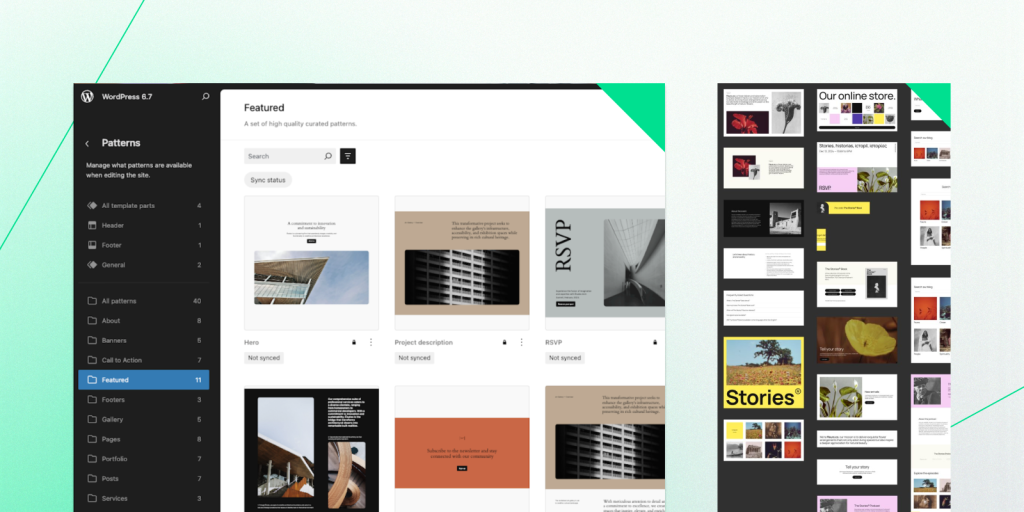WordPress 6.7 is scheduled for release on November 12, 2024, and brings a wave of exciting features that will enhance WordPress’s flexibility and efficiency for users of all types. Building on the refinements introduced in previous versions, 6.7 offers innovations to streamline content creation and expand the platform’s capabilities for enterprise-level websites. Let’s dive into some of the pivotal updates to watch for.
Introducing the Twenty Twenty-Five Theme
One of the most anticipated updates in WordPress 6.7 is the release of the new default theme, Twenty Twenty-Five. Built around the idea that simplicity should be intuitive while complexity should be possible, this theme is designed to offer users ultimate flexibility and adaptability.
Twenty Twenty-Five offers an extensive library of patterns for many page categories, such as services, landing pages, products, events, and calls to action. This allows users to quickly and effectively create purposeful page designs with minimal effort.
On the visual front, the theme supports multiple languages and offers eight different colour palettes and typography pairings to ensure global usability. The diversity of style variations makes it easy for users to tailor their website’s aesthetic to match their personal or professional brand.
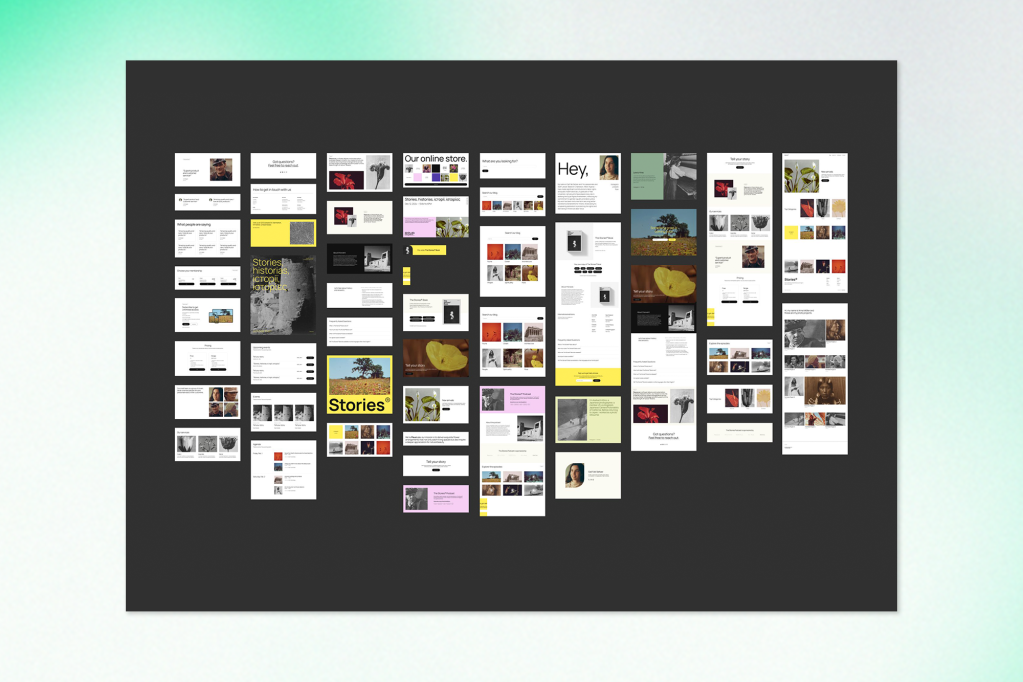
A New Way to Compose with Patterns
One of the standout features in this release is the ability to zoom out while editing patterns. Whether you’re building a simple blog or a dynamic site with complex page layouts, the zoom-out mode gives users a bird’s-eye view of their site’s structure, making it easier to arrange and manipulate patterns on a large scale. This feature is perfect for content creators looking for a high-level approach to managing their site’s design without getting lost in granular block editing.
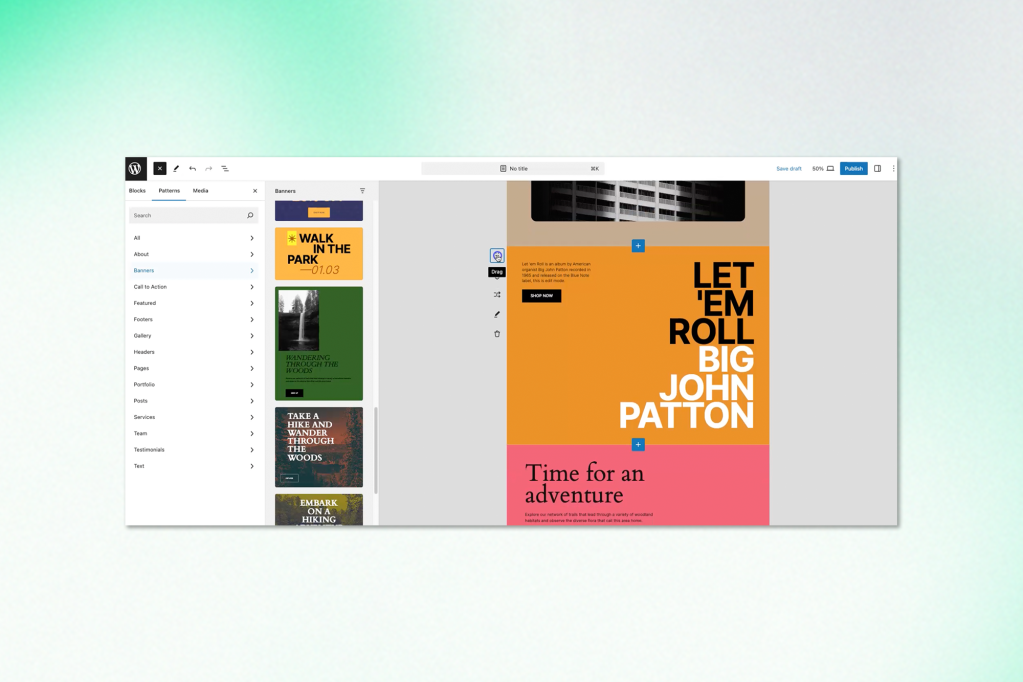
Empowering Enterprise Users: Template Registration API
The Template Registration API introduces a powerful new way to manage custom templates for enterprise websites. This API simplifies the process of registering and managing templates directly in the backend, allowing developers to handle large-scale sites with multiple custom layouts efficiently. It’s a game-changer for businesses looking to streamline site management and reduce the overhead of structural changes.
Advanced Media Handling with HEIC Support
HEIC image support in WordPress 6.7 is a valuable update for sectors prioritizing high-resolution media in their workflows. HEIC images will automatically convert to JPEG upon upload, ensuring compatibility with most browsers while maintaining performance. Enterprises with media-rich content, such as news outlets or entertainment platforms, will see a boost in loading speeds without compromising image quality.
Preview Options API
The Preview Options API is another new addition to WordPress 6.7. This API allows plugins to extend the Preview dropdown menu in the post and page editors, offering custom preview options for content. It allows developers to introduce new ways for users to view how their content will look on different devices or templates, adding an extra layer of control for previewing work.
Refined Query Loop Block for Better Content Control
The Query Loop block continues evolving, with new enhancements making it easier to display and filter dynamic content. Whether you’re running a media site with multiple categories or managing a corporate blog, the improved flexibility of the Query Loop block will help tailor the content presentation to match user preferences and behaviours. Key improvements include:
1. Strong Defaults: The Query Loop block now automatically inherits the query from the template, simplifying post display. The confusing Post List variation has been removed to prevent issues with posts not appearing.
2. Added Clarity: Settings are streamlined with intuitive toggles for default or custom queries, and options for filtering by posts, pages, or custom post types are more accessible. Frequently used settings like “Posts Per Page” and “Offset” have moved to the settings panel for easier control.
3. Refined Details: Enhancements include previewing the Query Loop block, more evident sticky post behaviour, and better labelling for pagination and post creation prompts.
4. Post Format Support: A new filter for post formats has been added, enabling more complex custom queries, such as filtering by author, categories, and post format. These refinements help users manage content more effectively and simplify creating complex queries.
Enhanced Design Tools and Block Supports
WordPress 6.7 brings exciting upgrades to its design tools, empowering users to customize their sites with even more precision and creativity.
– Shadow support for Group blocks: Designers can now add shadows to Group blocks, giving them more control over the visual presentation and allowing for more nuanced, layered designs.
– New block supports: Blocks like the Button, Gallery, and Post Title blocks are getting additional design capabilities, such as border, padding, margin, and colour support. This expands customization options for site designers, making creating unique, engaging layouts easier.
Font size presets: The Styles interface now allows for custom font size presets. This includes toggling fluid typography for responsive design, which helps ensure a site’s text scales smoothly across devices.
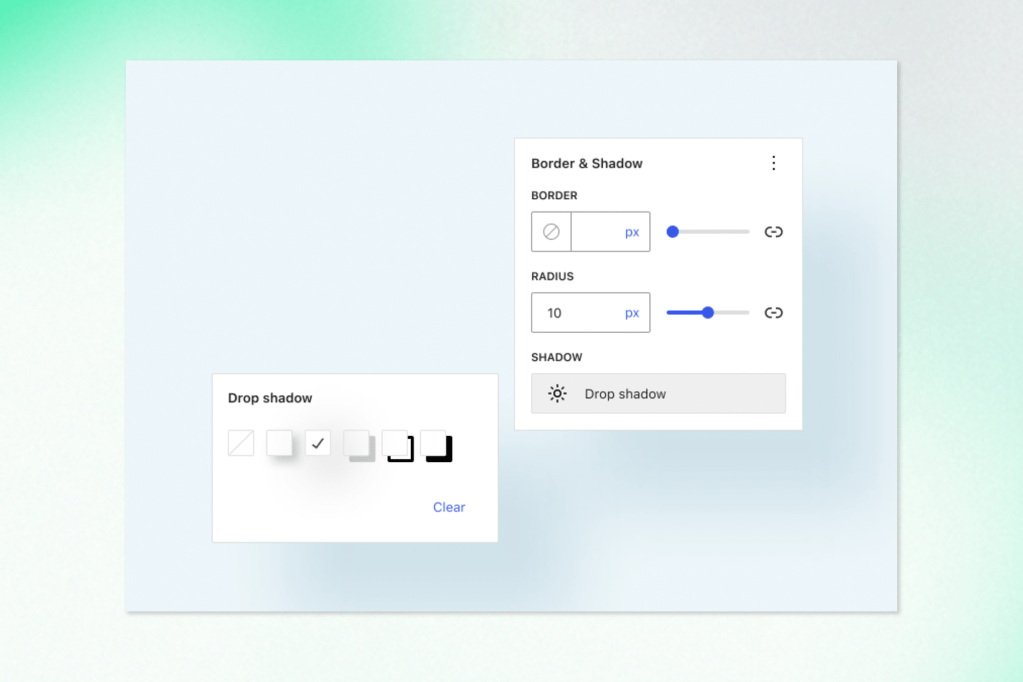
Continued Improvements for Data Views
Since its introduction, the Data Views feature has been continuously refined. WordPress 6.7 further enhances Data Views by adding more customization options, such as:
- Setting the density of information displayed in the grid layout.
- The ability to hide or show filters in the user interface.
- Customizable column order in table views.
These enhancements make working with large datasets more flexible and intuitive, which is especially helpful for content-heavy sites and large-scale businesses.
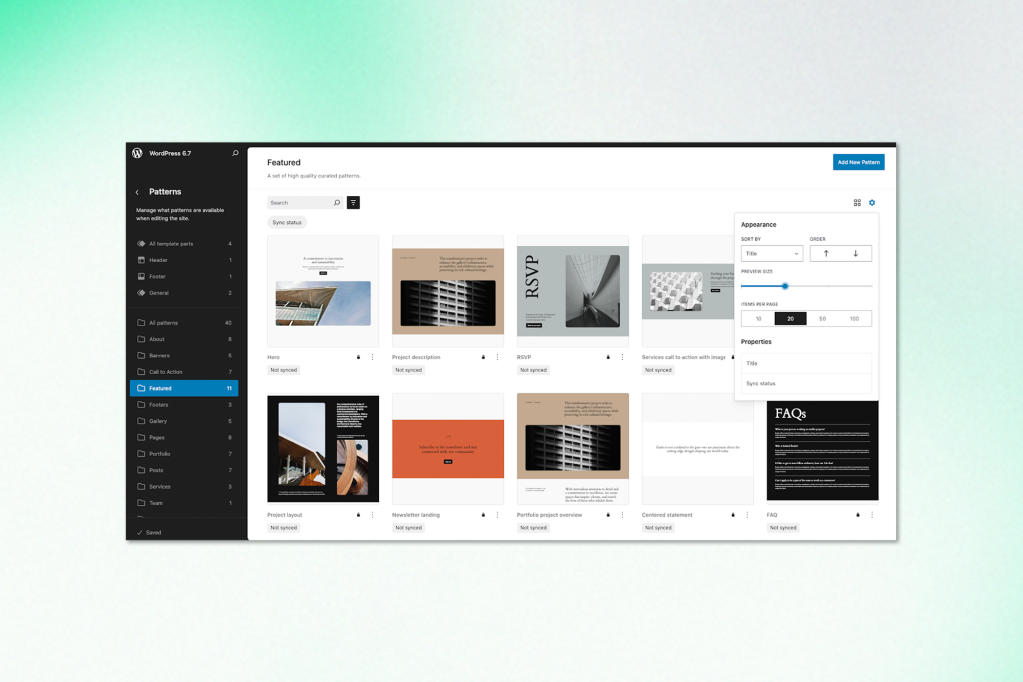
Block Bindings API Refinement
The Block Bindings API, introduced in previous versions, allows developers to bind dynamic data to block attributes. In WordPress 6.7, this API receives new refinements that make it easier to manage data bindings through the UI. This feature simplifies connecting content attributes to dynamic data sources, making it more accessible for non-technical users while expanding customization options for developers.
Improved Support for PHP 8.x
WordPress 6.7 continues its enhancements for PHP 8.x compatibility. Legacy code specific to older PHP versions has been removed, helping ensure that WordPress runs more efficiently on modern PHP environments.
Looking Ahead to WordPress 6.7
As WordPress 6.7 draws nearer, developers and site managers should start planning for the update. The combination of new features like zoom-out editing, HEIC support, and enterprise-friendly APIs positions this release as a significant step forward in making WordPress a more versatile, powerful platform for content creation at any scale. To get a head start, users can begin testing the beta version now, providing valuable feedback and ensuring their sites are fully prepared for the official release.
Get ahead with the latest WordPress updates—join our community today!
Follow us for news, innovations, and expert insights that are shaping the future of WordPress development.

